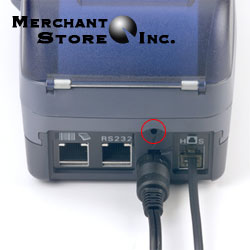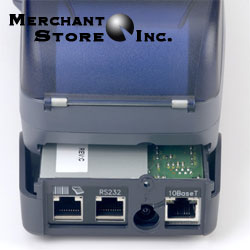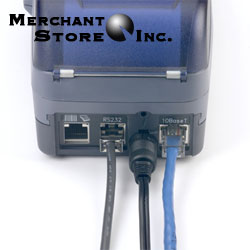March 15th, 2006 by Jamie Estep
TMF’d – What to do if you are are placed on the terminated merchant ‘match’ file…
Filed in: Ecommerce, Guides, Merchant Accounts, My Favorite Posts | 19 comments
I wish I could say that every business that is placed on a terminated merchants file deserves it. Unfortunately I would be absolutely lying to say so.
 The Terminated Merchants File (TMF) or match file is basically a list of merchants that have had their merchant accounts closed down by their processing bank on negative terms. This list, which resembles McCarthy’s black list during the cold war, is a stop-all flag that credit card processing companies in America abide by. If you are placed on the match file, you, any partner of your business, your business itself, and possibly anyone at your address can not sign up for a merchant account with a US based processing bank. Processing companies take the match file very seriously.
The Terminated Merchants File (TMF) or match file is basically a list of merchants that have had their merchant accounts closed down by their processing bank on negative terms. This list, which resembles McCarthy’s black list during the cold war, is a stop-all flag that credit card processing companies in America abide by. If you are placed on the match file, you, any partner of your business, your business itself, and possibly anyone at your address can not sign up for a merchant account with a US based processing bank. Processing companies take the match file very seriously.
How to get on the list:
When a merchant ends their contract with a merchant provider in a negative way, their name can be placed on this list. Unfortunately, not all business placed on the list even know they are on it until they try to get setup processing credit cards with another company. The rules to place a merchant on the list are fairly limited, but seem often abused.
The easiest way to get on the list is to close your contract with a merchant provider and not pay your final bill. Failing to fulfill your contract is almost a guarantee that you will get put on the match file. Your final bill includes any processing costs that you owe, but also includes any monthly, yearly, or termination fees that were specified on your merchant contract. You are also liable for 6 months past the settlement date of the final transaction that was processed on your merchant account. The settlement date is defined as the date that the service or merchandise was fully delivered to and accepted by the customer. Basically, if you sold someone a 1 year magazine subscription, you are liable 6 months after they get their last issue.
Merchants are normally placed on the TMF file for failing to pay their final bill, but can also be placed on it for reasons that can be out of their control. High chargeback ratios, processing fraudulent transactions and breaking a merchant account contract are other common reasons for being placed on the TMF. Running your own credit card through your own merchant account can also get your account closed and TMF’d.
What to do to get off the file:
The only company in the world that can get you off the TMF, is the company that put you on it. It does not matter who you talk to, what they promise, who they are, or anything else, it always comes down to the company that put you on it. Business normally learn that they are on the TMF when they try to open a merchant account with another company.
The company that puts a merchant on the TMF is the processor that is taking on the risk of allowing the business to process with them. These are often the back end companies that you may have never had any personal contact with. FDMS, Nova, Global, and others are back-end processors. Merchant Service Providers and resellers are not normally the companies that can put a merchant on the TMF, unless they are taking on the risk of your credit card processing, so calling them may have no effect, but regardless, the company you signed up your merchant account with is who you should contact first.
After you find that you are placed on the TMF, assuming that you don’t know why you’re on the list, you should first call your former merchant account provider. You are going to be inevitable led on a wild goose chase of phone tag with different departments in the company. Hopefully you can reach someone who can give you answers within a person or two. You may finally be referred to the processing bank itself, but in either case, after some diligent calling you should be able to track down someone who can inform you of your situation. The most important thing to remember right now is to remain calm and courteous to every person you talk to, no matter how upset or angry you may be. Yelling and acting aggressively toward people at this state is only going to create problems. It is understandable that you are frustrated with the situation, but most of the people you talk to do not have the ability to directly change things. Once you reach someone that can explain your situation to you, possibly in the risk department, they should be able to tell you why you are on the match file and what you need to do to get off the file. At this point make sure you get a more direct phone number for someone that you can correspond with about the situation.
Depending on why you are on the TMF, it can be easy to impossible to get off the TMF. If you are on it for committing fraud yourself through your own merchant account, don’t count on ever getting off. Processors do not like fraud in any way, and if you as a business owner were the cause of it, they will not ever want to provide services to you again.
If a business was placed on the match file for a high chargeback ratio, time is normally the only thing that will get the business off. The processor needs to know that they aren’t going to get stuck with any unanswered bills from the merchant’s former customer’s Chargebacks.
If you didn’t pay your final bill, it may just be a matter of making good on your debt with your former processor. I have seen this as low as a few dollars, and the merchant was removed about a week after they made payment.
Unfortunately the majority of the time it is not that simple to get off the match file. It normally takes several weeks to get off the match file. Sometimes it takes negotiations to get charges cleared up, or fees removed. At this point every case is unique. If after a few weeks you are not making any headway, you may need to consult a lawyer. Processors normally use a system called arbitration to avoid taking individual cases to court. It is cheaper than going to a court, and the results are often better for both parties.
It is a good idea to have a clear understand the rules of Visa and MasterCard. Knowing about the match file, and the general regulations of Visa and MasterCard can help a lot when trying to get off of it.
If you need legal assistance in getting of the Match file, you will unquestionably need a lawyer that has experience in bankcard law. Here are a few resources to help you if you find yourself in that situation. I do not personally have experience with these companies but several have been recommended to me and these seem reputable. Use your own judgement before choosing an attorney.
http://www.merchantcreditcardlaw.com/
http://www.riandalaw.com/
http://www.adamatlas.com/
How to stay off the match file:
Signing up with the wrong processor greatly increases a businesses chance to ever get put on a match file, especially for incidental reasons. I personally recommend signing up for a merchant account with FDMS or Nova as the back end processor, as businesses with these companies are much less likely to experience problems with the match file. In any case, make sure the provisions of the merchant account application, particularly the contract period and any associated termination fees are well understood before signing.
Related Posts:
Why are some companies offering free credit card terminals with their merchant accounts?
What Does All This Mean? – Merchant Account Fees
Credit Card Processing No No’s
Avoiding a Bad Merchant Service Provider

 Companies have responded to businesses needs and have created fraud detection and prevention systems. These systems are used in conjunction with a payment gateway, will help businesses recognize and prevent fraud on their websites. Visa and MasterCard have also created their own prevention systems that enable card holders to create a secret password, similar to a PIN number. The Visa and MasterCard systems called Verified by Visa and MasterCard Secure code are integrated into a website to provide a secondary checkout option for cardholders who are signed up for these systems.
Companies have responded to businesses needs and have created fraud detection and prevention systems. These systems are used in conjunction with a payment gateway, will help businesses recognize and prevent fraud on their websites. Visa and MasterCard have also created their own prevention systems that enable card holders to create a secret password, similar to a PIN number. The Visa and MasterCard systems called Verified by Visa and MasterCard Secure code are integrated into a website to provide a secondary checkout option for cardholders who are signed up for these systems. Lets just make a scenario to show exactly what I am referring to. Lets take John, a married middle age business man with 2 teenage boys. One day John’s oldest boy James, decides to ‘borrow’ John’s credit card to place an order online without asking.
Lets just make a scenario to show exactly what I am referring to. Lets take John, a married middle age business man with 2 teenage boys. One day John’s oldest boy James, decides to ‘borrow’ John’s credit card to place an order online without asking.





